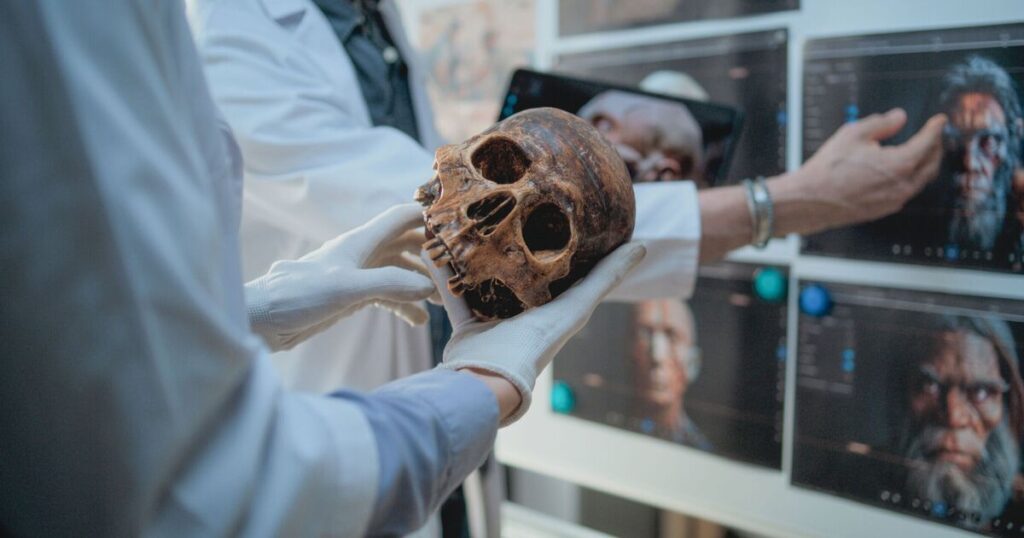Lead author Professor Israel Hershkovitz said, “Genetic studies over the past decade have shown that these two groups exchanged genes. Even today, 40,000 years after the last Neanderthals disappeared, part of our genome—two to six per cent—is of Neanderthal origin.
“But these gene exchanges took place much later, between 60,000 and 40,000 years ago. Here, we are dealing with a human fossil that is 140,000 years old.
“In our study, we show that the child’s skull, which in its overall shape resembles that of Homo sapiens—especially in the curvature of the skull vault—has an intracranial blood supply system, a lower jaw, and an inner ear structure typical of Neanderthals.”
The teams behind the project say that these remains are the earliest human fossil available in the world to display features of both Neanderthals and Homo sapiens. Until now, the earliest evidence of this was found in a skull dated around 40,000 years ago in a Romanian cave.
Another recent study by Professor Hershkovitz showed that Neanderthals lived in Israel as far back as 400,000 years ago.
Hershkovitz explained: “Traditionally, anthropologists have attributed the fossils discovered in the Skhul Cave, along with fossils from the Qafzeh Cave near Nazareth, to an early group of Homo sapiens.
“The current study reveals that at least some of the fossils from the Skhul Cave are the result of continuous genetic infiltration from the local, and older, Neanderthal population into the Homo sapiens population.”
Researchers have named this early human-Neanderthal type as ‘Nesher Ramla Homo’ after the archaeological site where it was found.
The local Neanderthals were eventually absorbed into the homo-sapien population, meaning they essentially disappeared like the later European Neanderthals.
“The fossil we studied is the earliest known physical evidence of mating between Neanderthals and Homo sapiens,” Professor Hershkovitz told the Times of Israel.
“In 1998, a skeleton of a child was discovered in Portugal that showed traits of both of these human groups. But that skeleton, nicknamed the ‘Lapedo Valley Child,’ dates back 28,000 years ago—more than 100,000 years after the Skhul child,” he said.
Before this groundbreaking find, anthropologists had attributed the fossils in the Skhul Cave to an early group of Homo sapiens.
“The current study reveals that at least some of the fossils from the Skhul Cave are the result of continuous genetic infiltration from the local—and older—Neanderthal population into the Homo sapiens population,” Hershkovitz added.

